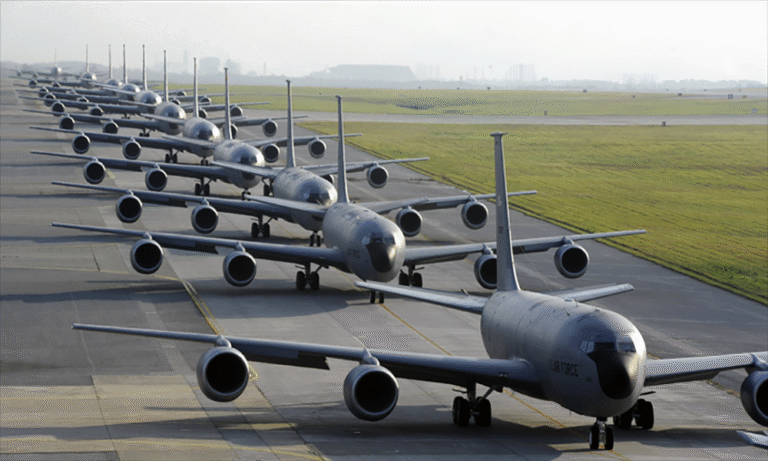Tensions are once again rising in the Middle East. As the situation between Israel and Iran grows more serious, the United States is sending more planes to the region. These are not just any planes. They include transport aircraft, fuel carriers, and surveillance jets.
In the past four days, at least 52 U.S. military aircraft have flown across the eastern Mediterranean Sea. Many of these planes passed through the skies of the United Kingdom and Greece. Flight tracking reports show a major increase in American military activity in the region.
Global observers are now watching with concern. This sharp military buildup suggests that the U.S. is preparing for something serious in the Middle East. The skies are filling with military planes at a time when the threat of a large conflict is growing.
From Monday to Thursday alone, about 25 of the 52 planes passed through the Chania airport on the Greek island of Crete. This number is eight times higher than what was seen in the first half of June. Experts see this as a clear sign of a shift in military strategy.
The aircraft types offer clues about their purpose. Among the 52 planes, 32 were used for transporting troops and supplies. Another 18 were fuel tankers used to refuel other planes in the air. Two of them were surveillance aircraft, likely collecting intelligence.
Military analysts say this kind of buildup usually comes before a major decision. There is growing speculation that U.S. President Donald Trump may be considering direct military action against Iran. These flights may be part of that plan, signaling readiness for any outcome.
The flights did not happen randomly. Their timing and volume suggest careful planning. Each plane crossing the Mediterranean is likely headed to American bases in the Middle East. These bases include locations in countries such as Kuwait, Bahrain, and Qatar.
This military movement has not gone unnoticed. Countries in the region are on high alert. News of this activity has spread quickly and is causing concern among civilians and governments alike. The possibility of a wider war is now being discussed more openly.
Security experts believe this is one of the largest short-term deployments of U.S. aircraft in the region in recent years. The aircraft movement fits a pattern that often occurs before large military operations. Although no official statements have been made, the increase in flights may point to early war preparations.
This buildup is also affecting global politics. Allies of both the U.S. and Iran are watching closely. European leaders have warned that any escalation could harm global stability. In the background, diplomacy continues. But the movement of jets suggests that military options are still on the table.
This is not the first time the U.S. has sent a large number of aircraft to the region. But the scale and speed this time are striking. Within just four days, the skies above the eastern Mediterranean turned into a major military route.
Analysts also point to the choice of flight paths. Many of the planes flew through air corridors over Greece and the U.K. This route suggests coordination with European partners. It also shows how much planning went into these deployments.
Observers say the next few days will be crucial. If more planes are sent, it could signal that the U.S. is preparing for something much bigger. For now, the world watches as the Middle East stands on edge.







